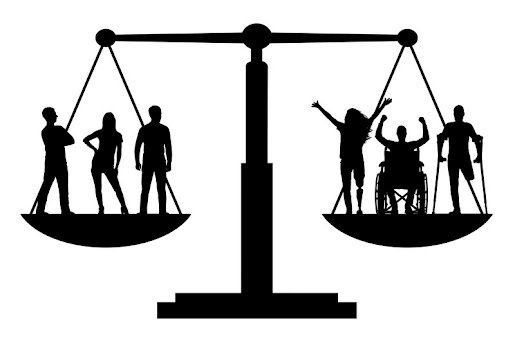Understanding the basics of Equal Employment Opportunity (EEO) laws
Equal Employment Opportunity (EEO) laws are designed to prevent workplace discrimination based on protected characteristics such as race, gender, religion, disability, age, and national origin. These laws apply to all employers with 15 or more employees, including federal, state, and local government agencies.
The EEO laws that protect employees from discrimination include;
- Title VII of the Civil Rights Act of 1964
- The Age Discrimination in Employment Act
- The Americans with Disabilities Act
- The Equal Pay Act
These laws prohibit employers from discriminating against employees based on their protected characteristics in all aspects of employment, including hiring, firing, promotions, and pay.
Employers are also required to provide reasonable accommodations to employees with disabilities to enable them to perform their job duties, unless doing so would create an undue hardship on the employer. Additionally, employers must ensure that their workplace is free from harassment based on protected characteristics, including sexual harassment.
Employers who violate EEO laws may be subject to legal action, including fines and damages. Employees who believe they have been the victim of workplace discrimination can file a complaint with the Equal Employment Opportunity Commission (EEOC). The EEOC will investigate the complaint and may take legal action on behalf of the employee if the investigation finds that discrimination occurred.
There have been many high-profile cases of employers who have violated EEO laws, resulting in significant legal and financial consequences. Here are a few examples:
- Uber: In 2017, ride-sharing company Uber faced allegations of widespread sexual harassment and discrimination. The company was accused of ignoring complaints from female employees and creating a hostile work environment. The EEOC launched an investigation, which resulted in a $4.4 million settlement with the agency. Uber also agreed to implement changes to its policies and procedures to prevent future discrimination.
- Walmart: In 2019, Walmart agreed to pay $80 million to settle a class-action lawsuit alleging that the company had systematically discriminated against female employees in pay and promotions. The lawsuit, which was filed in 2001, claimed that Walmart had a pattern of paying women less than men for comparable work and denying them promotions to higher-paying positions.
- Boeing: In 2020, Boeing agreed to pay $2.5 million to settle a lawsuit alleging that the company had discriminated against Muslim employees at a facility in Seattle. The lawsuit claimed that Boeing had refused to allow Muslim employees to take breaks to pray, had excluded them from promotions, and had subjected them to derogatory comments and harassment.
- Google: In 2018, Google was hit with a lawsuit alleging that the company had systematically discriminated against female employees in pay and promotions. The lawsuit, which was filed on behalf of three female employees, claimed that Google had a culture of sexism and discrimination. The case is still ongoing.
These cases demonstrate the serious consequences that employers can face when they violate EEO laws. Employers must take steps to prevent discrimination and harassment in the workplace and create a culture that values diversity and inclusion.
In conclusion, understanding EEO laws is essential for employers to ensure a fair and equal workplace for all employees. Employers must take steps to prevent workplace discrimination, including implementing policies and procedures to address discrimination and harassment, providing training for employees and managers, and promptly investigating and addressing complaints of discrimination. By complying with EEO laws, employers can promote a positive workplace culture that values diversity and inclusion.
REFERENCE
Equal Employment
Opportunity (n.d.) Available from
http://www.dol.gov/general/topic/discrimination.
Equal Employment
Opportunity Act of 1972 | Encyclopedia.com (n.d.) Available from https://www.encyclopedia.com/finance/finance-and-accounting-magazines/equal-employment-opportunity-act-1972.
Equal Employment
Opportunity Laws and Regulations | PSU Affirmative Action Office (n.d.)
Available from
https://affirmativeaction.psu.edu/welcome/equal-employment-opportunity-laws-and-regulations/.
https://study.com/academy/lesson/what-is-equal-employment-opportunity-definition-laws-policies.html
(n.d.) Available from
https://study.com/academy/lesson/what-is-equal-employment-opportunity-definition-laws-policies.html.
Laws Enforced by EEOC
(n.d.) Available from https://www.eeoc.gov/statutes/laws-enforced-eeoc.
Levin, S. (2018) Google
gender pay gap: women advance suit that could affect 8,300 workers Available
from
http://www.theguardian.com/technology/2018/oct/26/google-gender-pay-gap-women-class-action-lawsuit.
Segal, E. (2022) Walmart
Is Sued For Gender And Race Discrimination By EEOC Available from
https://www.forbes.com/sites/edwardsegal/2022/02/11/walmart-is-sued-for-gender-and-race-discrimination-by-eeoc/.
Siddiqui, F.
(2019) Uber to pay up to $4.4 million to alleged gender discrimination
victims after EEOC investigation Available from
https://www.washingtonpost.com/technology/2019/12/18/uber-pay-million-victims-alleged-gender-discrimination-following-eeoc-investigation/.
Zuckerman, L. (1999) Boeing Agrees to Settle Case Charging Bias in Salaries Available from https://www.nytimes.com/1999/11/19/business/boeing-agrees-to-settle-case-charging-bias-in-salaries.html.




Employees are able to openly connect and engage with one another because to good hiring practices and the Equal Employment Opportunity regulations, which prohibit discrimination against coworkers based on their racial backgrounds, sexes, religions, or organizational positions.
ReplyDeleteGood implementation.
Thank you for your valuable comment :)
DeleteGreat blog post! You provide a clear and concise explanation of the EEO laws and their application to all employers with 15 or more employees. Your examples of high-profile cases of EEO violations are very helpful in illustrating the serious consequences that employers face when they violate these laws.
ReplyDeleteThank you for your valuable comment :)
Delete